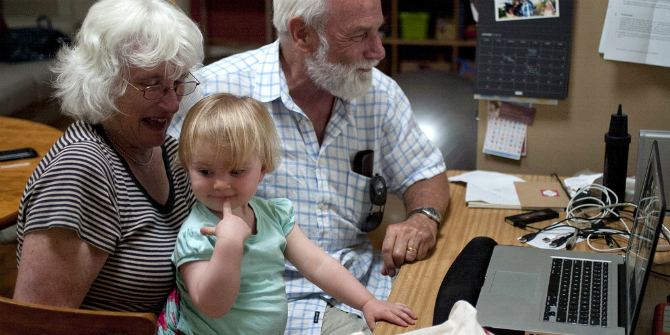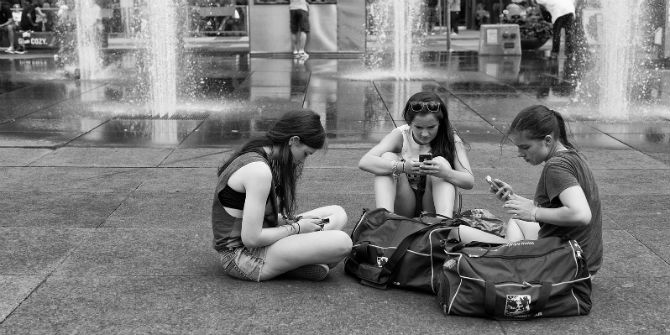 The interest in personalisation, that is using information about individuals for tailoring generic content, has been with us since the dawn of humankind, but it got intensified with the advent of the personal data economy. For www.parenting.digital, Natalia Kucirkova discusses her new book ‘The Future of the Self: Understanding Personalization in Childhood and Beyond’. Weighing up the pros and cons of the identity changes that accompany our current data-driven lives, the book suggests that our identities are being directly fragmented and amplified with the unprecedently big amount of personal data shared by, and for, us.
The interest in personalisation, that is using information about individuals for tailoring generic content, has been with us since the dawn of humankind, but it got intensified with the advent of the personal data economy. For www.parenting.digital, Natalia Kucirkova discusses her new book ‘The Future of the Self: Understanding Personalization in Childhood and Beyond’. Weighing up the pros and cons of the identity changes that accompany our current data-driven lives, the book suggests that our identities are being directly fragmented and amplified with the unprecedently big amount of personal data shared by, and for, us.
Different individuals are affected in different ways, depending on their lived histories and the future interest in their ‘self’ by society. We are all united by being part of a data storm that splinters our lives into manifold versions of our ‘selves’. Some data, such as the use of Google maps, connect our online and offline movements. Other data, such as our photos on Instagram, visualise parts of our identities that we desire to share with small or giant groups. The commercial interest behind the design of the personal data economy ensures that the diverse fragments of our ‘selves’ get amplified through globally optimised algorithms.
To a certain extent, adults can select which aspects of their ‘selves’ are shared and propagated on social media and personal service platforms. However, children, especially the youngest ones with an emerging understanding of the ‘self’, face their data being distributed, stored and managed by various adults and the institutions and organisations these adults represent. Children’s personal characteristics, health data, school tests or family photos are being used for commercial, social, educational or political purposes, and this use affects children’s experiences and ultimately their understanding of who they are.
My concern in the book is not about the trade-offs of privacy versus security of personal data: without a doubt, children’s rights apply in the digital world too and we need to constantly update legislations such as the General Data Protection Regulation (GDPR). My concern is about the impact of the personal data economy on our identities. I revisit the perennial fear that machines will take over us by focusing on the quintessentially human capability of control and volition, or agency, for short. The ability to be in control of one’s personal data and to make choices about how the data are being collected, used and re-purposed seems like an essential solution to the currently badly regulated and unfairly designed digital application landscape.
Micro-servers enable holding all personal data in one personal account in a secure and private way. When person-owned decentralised micro-servers become more commonplace in the governing structure of the internet, they will allow for even more precise personalisation of products, services and experiences. Currently, personal data are sprinkled in various places, thus giving the decision-making power over the extent of precision to the service provider. When all data become owned and managed by individuals, the degree of personalisation will be determined by the individuals. This prospect is exciting for consumers. Consider the possibility for individuals to decide which discount voucher they receive rather than for the supermarket to decide it on their behalf. This prospect is also concerning when considering the inequal experiences of individuals with a high ability to execute their agency and those who need help with their choices.
With some personalised services, such as Google search for example, precise personalisation is of essential benefit for navigating the vast amounts of online information. With some personal goods, precision personalisation is beneficial not only for the individual but also for the wider social group (think of a face mask that belongs to an individual that can be personalized with the individual’s name). The problem with the increasing trend towards precise personalisation is that it targets only one part of agency: its self-oriented part. Yet, for agency to move humankind forward, it needs to be as much about powerful determination driven by the self as much about vulnerable belonging driven by others. The social and technological developments during the last two decades have intensified the two ends of the spectrum but were less successful in bringing them together.
Children can make discerned choices about their lives only if they are brought up with a judicial balance between practices that promote an individual’s determination and social cohesion. In contrast to micro-servers, collectively-oriented designs such as blockchains, lie on the other end of the personalised-pluralised spectrum. While personalisation targets an individual’s data, pluralisation diversifies the targets through collective engagement. Personalisation and pluralisation are not a dichotomy, they work best in combination. When they behave in a pendulum-like fashion with design targeting one or the other end, our personal and collective identities suffer.
The socially just solution is the sweet spot between personalised-pluralised (P-P) design. Therefore, the future web design scenario to which I attach most probability is that of a P-P internet. The basics of this set-up are already visible in the social design of society during crises, such as the one we have seen with the Covid-19 pandemic. P-P design is similar to the concept of social bubbles – it is simultaneously personalised to the individual and pluralised to the collective, like the middle part of a Venn diagram. The intersection of the two sets contains only the elements that are in both sets, so the wellbeing and actions of one individual affect the rest of the group.
The P-P design implies that individuals and their bubble will benefit only if they know very well themselves and those closest to them, hopping between bubbles carries significant consequences for everyone within and outside the bubble. It follows that trust is essential for the P-P scenario to ensure all individuals achieve their goals and operate as successful mini-groups. Children of strong bubbles are more able to navigate the complex and difficult challenges of the Anthropocene era, drawing on the collective insights of the group which are highly relevant for their individual wellbeing. The Future of the Self therefore lies in children who are resilient enough to manage their own choices and who can negotiate their belonging to bubbles that augment the best in them.
First published at www.parenting.digital, this post gives the views of the authors and does not represent the position of the LSE Parenting for a Digital Future blog, nor of the London School of Economics and Political Science.
You are free to republish the text of this article under Creative Commons licence crediting www.parenting.digital and the author of the piece. Please note that images are not included in this blanket licence.
Featured image: photo by Ketut Subiyanto on Pexels





